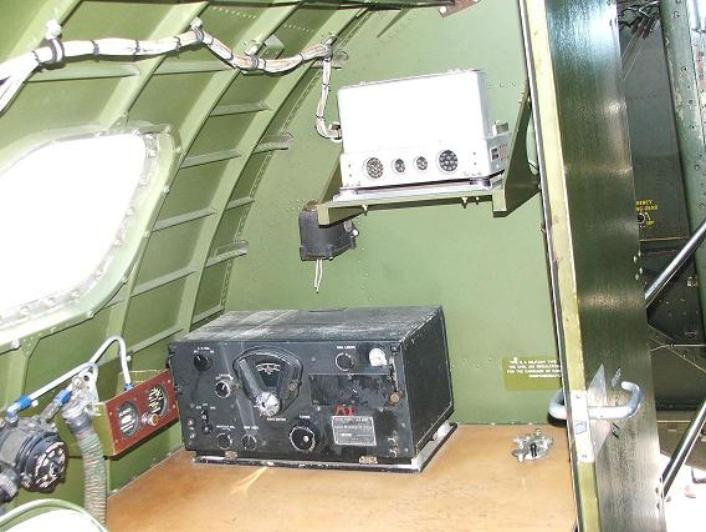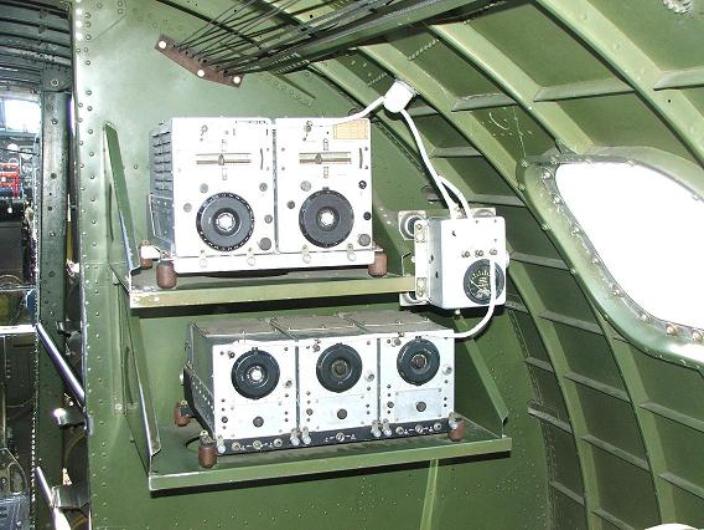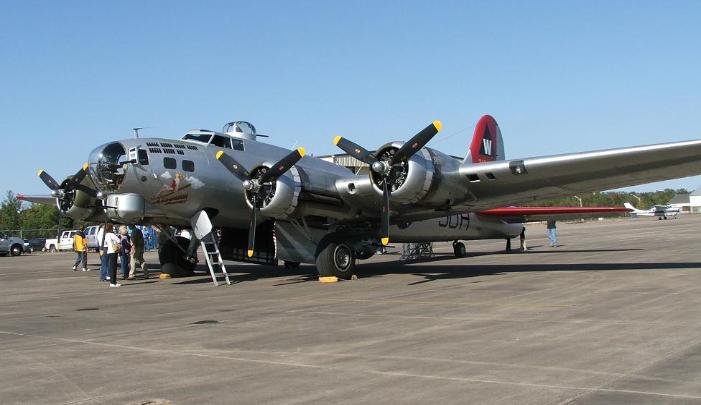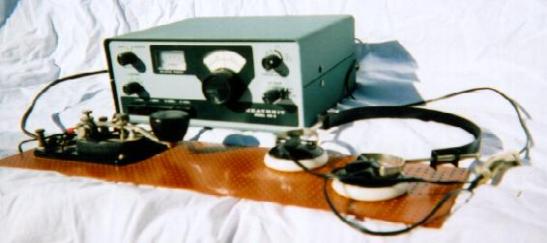| HAM RADIO and MORSE CODE - by: AARON GEORGE BAILEY - WA5HRC MY FAVORITE HAM RADIO RIG - THE HEATHKIT HW-8 |
| George Bailey - callsign - WA5HRC Hear me send my Callsign "WA5HRC" in Morse Code I have more powerful and sophisticated radios but they rest on shelves collecting dust. It is this little jewel that I love the most. This old build-it-yourself Heathkit HW-8 is a low power, battery operated, Morse Code transceiver. I like the challenge of operating with 1 or 2 watts, about the same amount of energy that a flashlight puts out in the form of light. Operating low power (QRP) is a thrill when communicating with another station, half a world away. I am part of a dying breed because I still use Morse Code (CW) that I pound out with a World-War-2 straight key. During the 1950s - 60s - 70s and 80s HAM Radio and Electronics was the geeky thing to do, kind of like computers and the Internet of today. Many people confuse Ham-(Amateur Radio) with CB radio. They are completely different and separate. Ham operators, like myself, have to pass a FCC exam to qualify for a Radio License whereas, ANYONE can buy a CB radio and put it on the air. CB radio has its own 27Mhz frequency band. Unfortunately, drug dealing, flesh peddling and foul language, infest the CB Band, but by contrast, Hams maintain a high standard of Public Service on their Bands. Most people alive today know about Morse Code only from movies such as Titanic.* In the early days of radio Morse Code was used exclusively. Even after the advent of AM voice transmission, Morse Code was still favored because it was readable through static when stronger voice signals couldn't be understood.- (Reference my 2 watt signal above) The early Soviet Cosmonauts were trained to use code, again, because it would get through when AM voice signals couldn't. In an emergency situation Morse Code can be sent with a flashlight, horn, whistle, or by using a wrench to tap it out on a steel hull. In fact, this did happen. After the Japanese sneak attack at Pearl Harbor, the USS Arizona sank to the bottom with many men trapped alive within air pockets. They communicated with rescuers by pounding out SOS on the hull and some of them were saved in time. I believe basic code should be taught in school because, given an unusual emergency, when all else fails, it is the universal language. Over the years the Amateur (HAM) Radio community and the Federal Communications Commission (FCC) helped keep Morse Code alive. I worked hard to get my HAM license in 1964. I had to pass the FCC exam on Radio Electronics theory and on sending and receiving code and similar requirements have remained in effect until recently. Sadly, the FCC has dropped the code requirement and, to me, have watered down the requirements for getting a HAM license. In the old days, FCC licensing, in effect, created a pool of trained radio operators, which in time of war could easily fill the ranks of military radiomen. This was especially true at the start of WWII when the bulk of communication was still in code. NOTE- See below the telegraph key in the Radio Shack of B-17 Aluminum Overcast. In 1966 the US Navy recognized my HAM Licence and automatically advanced me two pay grades and being a Navy Radioman & licensed Ham, later helped me secure a job at Southwestern Bell Telephone. Earning my HAM Radio Licence at a young age helped me. Of coarse, Communications Technology has leaped ahead as the US Military places more and more reliance on exposed satellite systems. Even in this High Tech age, I still believe Morse Code and shortwave radio have a place in the scheme of things. -see related |

| * Simulated Titanic Distress Signals On April 15, 1912 the RMS Titanic was sinking by the bow after hitting an iceberg. At 12:15AM, the Titanic wireless operators were ordered to begin sending "CQD De MGY." ("CQD" Calling all Stations, Danger, "De" This is, "MGY" was the call sign of the Titanic) The newly designated distress call "SOS" was also sent out by the Titanic radiomen. The radio transmitter on the Titanic was the spark type that put out a raspy sounding code around 500 Kilocycles. The Titanic SOS flashed out of the cold North Atlantic and was heard by stations all along the East Coast of the USA. BELOW- Listen to a simulation of that Broadcast.- CQD CQD SOS SOS CQD DE MGY MGY MGY Every Morse code (CW) operator has a distinctive style of sending just like people have different hand writing styles. In radio jargon this is referred to as the operators "FIST". See Titanic special event Ham radio QSL card RETURN TO HOME PAGE AND INDEX |

| Note - I made the 3 photos above on Oct. 15, 2006 when I toured inside Aluminum Overcast at NLR airport. *Titanic Sunset |

| CLICK HERE SEE RADIO GEAR FROM ANOTHER ANGLE |
